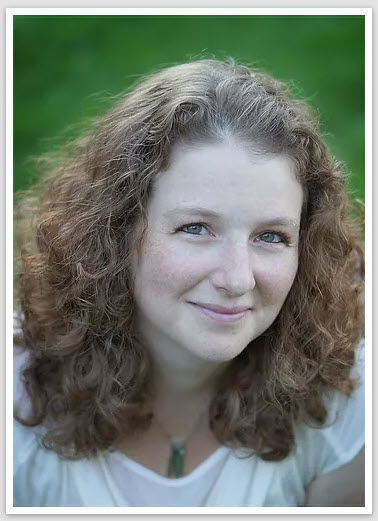5-Min Science: Cortical Layers May Generate Different EEG Rhythms
- BioSource Faculty
- Nov 6, 2024
- 6 min read
Updated: Nov 20, 2024

The human brain's cortex is approximately 90% neocortex and 10% three-layered allocortex. The neocortex, responsible for complex thinking and perception in mammals, is divided into six layers, each with unique types of cells, sizes, and neural connections. Recent research indicates these layers might specialize not just in structure but also in the types of brain waves they generate.
Outer Layers Are Sensory, Deeper Layers Are Control
In general, outer layers seem to manage sensory input, while deeper layers handle the brain’s response to this information. This layered structure may play a key role in the balance of brain activity, influencing cognitive function and mental health. Cortical layer graphic © Anna Him/Shutterstock.com.

Gamma Arises in the Outer Layers, Alpha and Beta in the Deeper Layers
Published in Nature Neuroscience, this new study reveals a strikingly consistent pattern: rapid gamma waves frequently arise in the outer layers, whereas slower alpha and beta waves are generated in deeper layers. This pattern was confirmed across 14 cortical regions and four species, including humans, underscoring its importance. These findings could deepen our understanding of neuropsychiatric conditions and may eventually lead to novel treatments.
The researchers observed this pattern consistently across various cortical areas in macaques and other primates through a series of experiments. They even found a similar gradient in mouse brains, albeit with a broader frequency range. Recording activity in individual cortical layers—each less than a millimeter thick—posed a challenge, so the researchers used special probes with multiple electrodes to capture signals from all layers simultaneously. They then employed an algorithm, FLIP, to determine which layer each signal originated from, later verifying these results through anatomical studies.
The Basics of Brain Waves and Cortical Layers
The cortex of the brain's cerebrum is a thin outer layer critical for many functions like perception, decision-making, and motor control. The word "cortex" is Latin for bark. The cortex is organized into six layers, each with distinct types of cells and functions. Brain waves—electrical patterns created by the brain's cells—occur in different frequency bands, like alpha and beta waves (8-30 Hz) and faster gamma waves (30-150 Hz). The study found that alpha-beta waves are strongest in the cortex's deeper layers (5/6), while gamma waves peak in upper layers (2/3). This consistent organization across layers is what the researchers call the "spectrolaminar motif."
Why This Matters: Mapping the Cortex
Previously, it was challenging to map these layers in different brain areas and species reliably. FLIP provides a simple way to "label" these layers automatically by measuring the strength of different brain wave frequencies at various depths. This tool could help standardize brain research, making it easier to compare data from different animals or brain regions and potentially aiding in developing treatments for neurological disorders involving abnormal brain waves, like Parkinson’s disease or schizophrenia.
How FLIP and vFLIP Work
FLIP uses signals collected from multiple layers in the cortex and creates a “power map,” showing the intensity of brain waves at different frequencies and depths. It automatically identifies key points, like the peak of gamma and alpha-beta waves and the “crossover” point, which typically corresponds to a central layer (layer 4) in the cortex. This automated process makes FLIP a fast, reliable tool for identifying brain layers.
vFLIP, an extended version of FLIP, goes a step further by adjusting to the specific needs of each species or experiment. For example, in species with slightly different brain architectures, like mice, vFLIP can shift its focus to match the best frequency ranges for identifying layers. This flexibility makes vFLIP particularly useful when studying brain structures that may not exactly follow the typical primate patterns.
Current Source Density (CSD) and Its Role in Layer Mapping
The researchers also used another method called Current Source Density (CSD) analysis, which helps visualize where currents (electrical activity) flow in and out of the brain layers. Scientists can estimate the relative location of cortical layers by marking specific points, or “sinks,” where currents flow into the cortex. Combining CSD with FLIP, researchers could more accurately confirm the positions of different layers in the brain, which is particularly helpful for ensuring the correct probe placement in research or clinical settings.
Key Findings and Applications
The researchers’ previous studies suggested that high-frequency gamma waves play a role in encoding sensory information, while lower frequencies, such as alpha and beta waves, might function as control signals, guiding the brain's response to sensory input. For example, an excess of high-frequency activity might lead to issues like attention deficits or sensory overload, as the brain over-processes sensory inputs. Conversely, a lack of high-frequency activity could contribute to psychosis by reducing external input processing, forcing the brain to rely on internally generated signals.
Significantly, the study points to specific cortical layers as potential origins of these imbalances. For instance, in schizophrenia, reduced gamma wave activity is a known feature. This research holds promise for identifying the neural roots of neuropsychiatric conditions and ultimately guiding targeted interventions based on cortical layer activity.
The study showed that this “spectrolaminar pattern” is consistent across different species, with similar patterns in macaques, marmosets, and humans. Mice, however, had slightly different arrangements in brain layers, likely because their brains are structurally different. These findings suggest that FLIP and vFLIP could provide a common reference framework for brain mapping across species, which is especially useful for translating research findings from animals to humans.
Future Directions
By using FLIP, researchers hope to set a standard way of studying cortical layers, which could also support a “canonical microcircuit” model. This model proposes that all cortical regions are built on a common structure but are adapted for specific functions. In applied settings, FLIP could aid in the precision of deep brain stimulation (DBS) treatments and other brain surgeries, allowing doctors to place electrodes accurately within specific layers of the cortex. This precision is crucial for effectively treating conditions like epilepsy, Parkinson’s disease, or even psychiatric disorders with abnormal cortical rhythms.
Summary
Overall, FLIP and vFLIP represent a new way of looking at brain structure and function, making it easier to study how different parts of the cortex are organized and interact. By bridging anatomical data (layer positions) with functional data (brain wave patterns), these methods could improve our understanding of the brain’s basic structure and support more effective treatments for neurological conditions.
Meet the Authors
Glossary
alpha waves: these brain waves fall within the range of about 8–12 Hz and are typically associated with relaxed, wakeful states and mental inactivity, like quietly resting or meditating. In this study, alpha waves are mostly generated in the deeper cortical layers (layers 5/6). They are thought to play a role in controlling the brain's response to sensory information, functioning as a "braking" mechanism or control signal.
beta waves: slightly faster than alpha waves, beta waves range from 13–30 Hz and are associated with more active, alert states. Like alpha waves, beta waves in this study arise primarily from the deeper cortical layers. They are also believed to contribute to control processes, such as focusing attention and processing tasks, acting as a guiding or stabilizing influence on incoming sensory information.
canonical microcircuit: a proposed model suggesting uniform computational structures across cortical regions.
current source density (CSD): a method to localize electrical currents in neural tissue used to map cortical layers.
deep brain stimulation (DBS): a therapeutic technique that delivers electrical impulses to specific brain areas.
frequency-layer identity pattern (FLIP): an algorithm for mapping cortical layers based on oscillatory power crossovers.
gamma waves: high-frequency waves, generally between 30–150 Hz, linked with active cognitive processes like perception, learning, and memory. The study found that gamma waves tend to originate in the cortex's outer, more superficial layers (layers 2/3). Gamma waves are associated with sensory processing and rapid communication across cortical areas, helping the brain encode and interpret external stimuli.
spectrolaminar pattern: a layer-specific oscillatory motif that aids in cortical layer identification.
vFLIP: a variant of FLIP that allows frequency range adjustments for different recording conditions.
Open Access Article
Mendoza-Halliday, D., Major, A. J., Lee, N., Lichtenfeld, M. J., Carlson, B., Mitchell, B., Meng, P. D., Xiong, Y. S., Westerberg, J. A., Jia, X., Johnston, K. D., Selvanayagam, J., Everling, S., Maier, A., Desimone, R., Miller, E. K., & Bastos, A. M. (2024). A ubiquitous spectrolaminar motif of local field potential power across the primate cortex. Nature Neuroscience, 27(3), 547–560. https://doi.org/10.1038/s41593-023-01554-7
Support Our Friends

Dr. Inna Khazan's BCIA Introduction to biofeedback workshop will be offered in two parts this year.
Part 1 is entirely virtual, consisting of 20 hours (over 5 days) of live online instruction, home-study materials distributed prior to the live workshop, and written instructions for practical lab work to be completed during the week of the workshop or after its completion. Part 1 fulfills BCIA requirements for introduction to biofeedback didactic. Part 1 will take place on Zoom, November 4 - 8, 2024, 12 - 4pm EDT. Tuition is $1395.
Part 2 is optional, and consists of 14 hours (over 2 days) of in-person hands-on practical training using state-of-the-art equipment, designed to help participants be better prepared to start working with clients. Part 2 will take place in Boston on November 11 & 12, 2024, 9am-5pm EDT. Tuition is $395. (Please note that an Introduction to Biofeedback didactic (taken at any previous time, anywhere) is a pre-requisite to the hands-on training).








Comments